Our Library
Explore our publications, from research papers and series to educational materials, covering all aspects of conflict transformation and peace promotion.

Social Change and Conflict TransformationHandbook Dialogue Series No. 5 - complete
In his lead article, Christopher Mitchell, Professor Emeritus of George Mason University’s Institute for Conflict Analysis and Resolution (ICAR), sets out a framework for thinking systematically about the relationship between conflict and (social) change. He considers necessary changes to bring about the resolution of conflict, as well as obstacles to such changes, and envisions possible roles for agents of change. Five authors have expanded on, and critically reviewed, this lead article: Ed Garcia (International Alert), Chris Spies (UNDP Guyana), Ilana Shapiro (University of Massachusetts), Vivienne Jabri (King's College London) and Daniela Körppen (Berghof Peace Support).
- Year2006
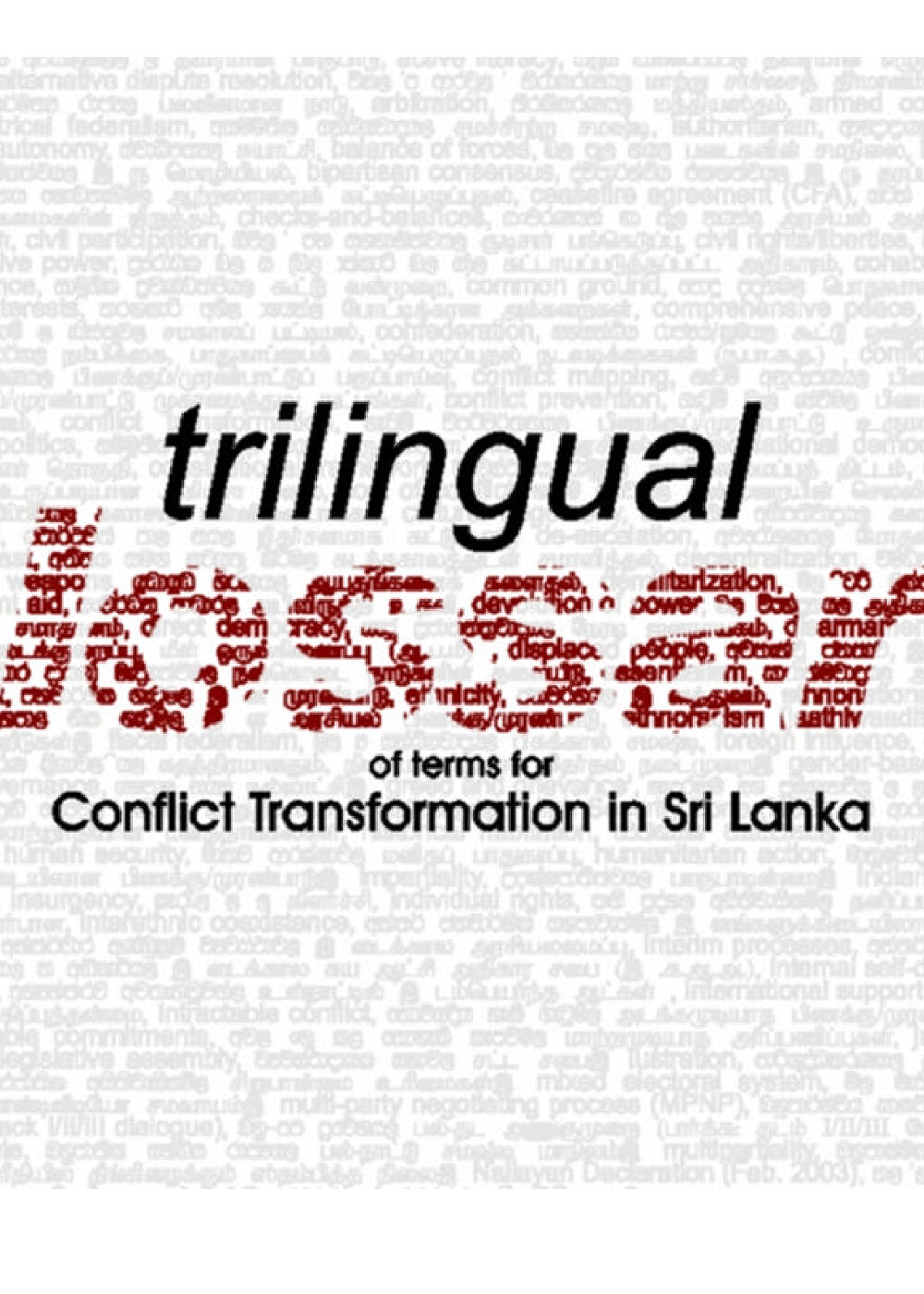
Trilingual Glossary of Terms for Conflict Transformation in Sri Lankaලංකාවේ ගැටුම් විපරිවර්තනය ත්රෛභාෂා පාරිභාෂික ශබ්ද කෝෂය / இலங்கையில் மோதுகை மாற்றுநிலையாக்கத்திற்கான அருஞ்சொற்பதங்கள்
Trilingual Glossary of terms for Conflict Transformation in Sri Lanka
ලංකාවේ ගැටුම් විපරිවර්තනය ත්රෛභාෂා පාරිභාෂික ශබ්ද කෝෂය
இலங்கையில் மோதுகை மாற்றுநிலையாக்கத்திற்கான அருஞ்சொற்பதங்கள்
- Year2006
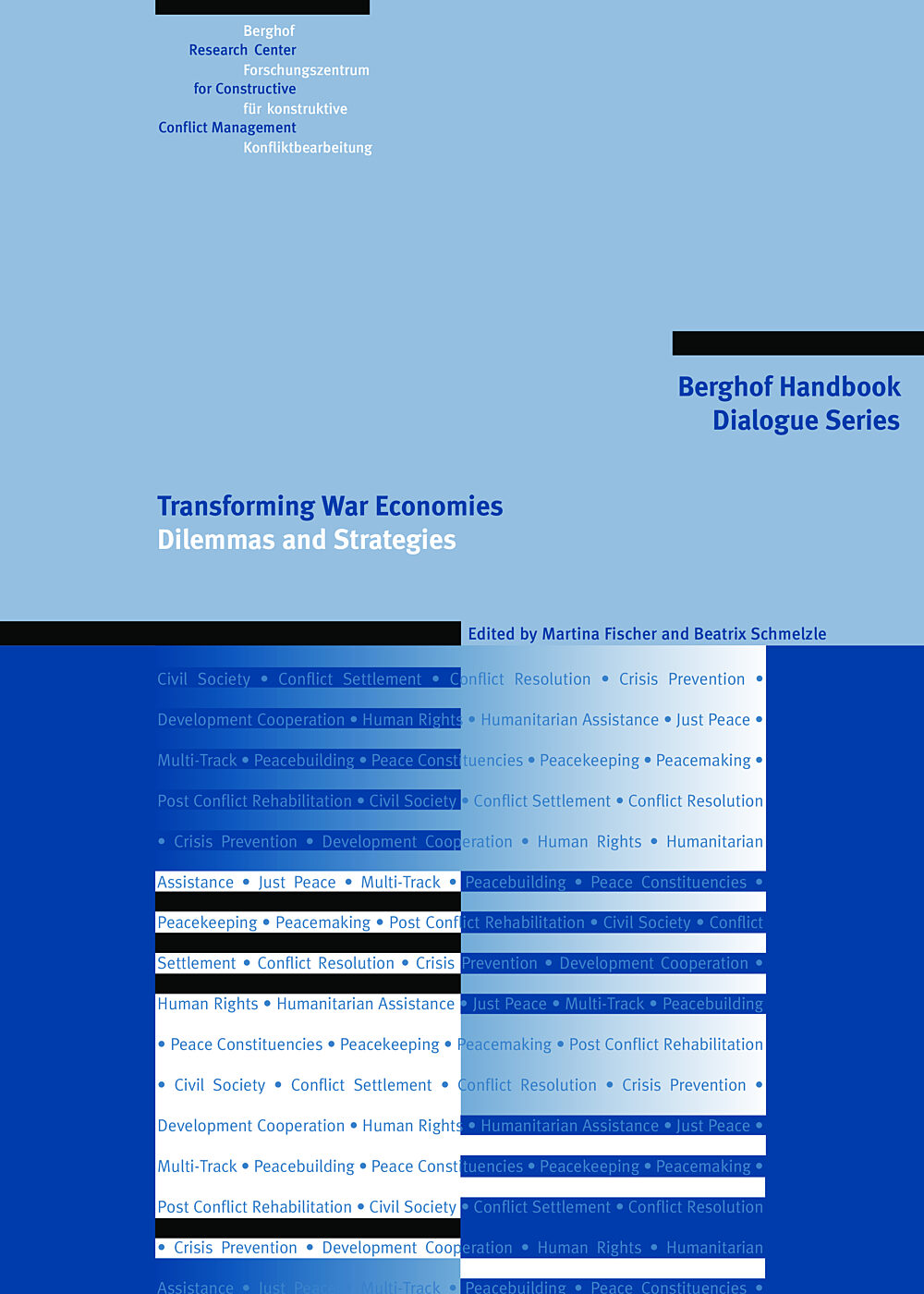
Transforming War Economies: Dilemmas and StrategiesHandbook Dialogue Series No. 3 - complete
This Dialogue sets out to assess the usefulness of current analytic approaches and policy recommendations in dealing constructively with war economies. Starting off with an overview of the state of the debate by Karen Ballentine and Heiko Nitzschke, respondents from a broad variety of backgrounds add their reflections, strategies and critique.
- Year2005
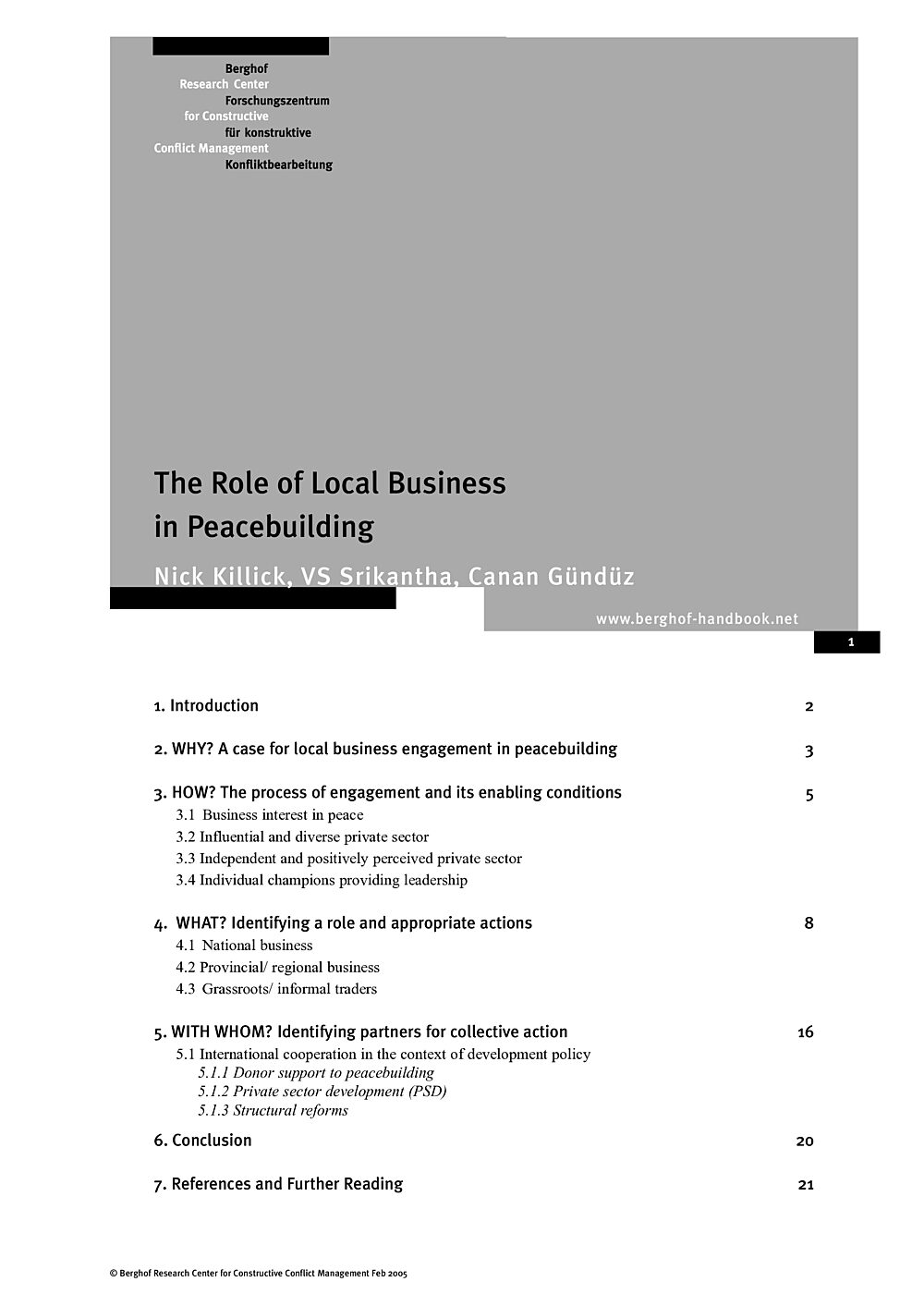
The Role of Local Business in PeacebuildingHandbook Article
- Year2005
- Author(s)Nick Killick, VS Sriantha, Canan Gunduz
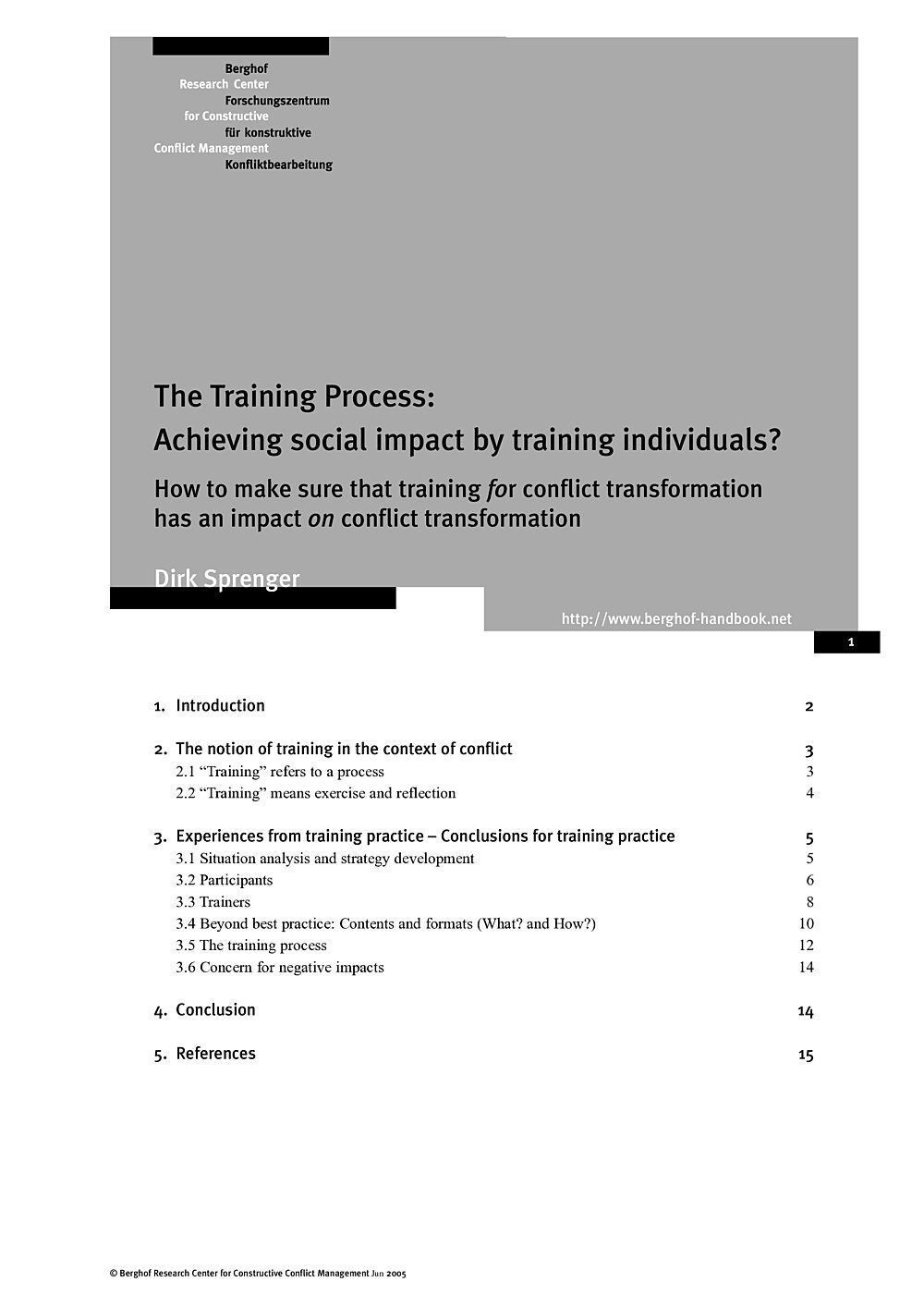
The Training Process: Achieving Social Impact by Training Individuals?Handbook Article
- Year2005
- Author(s)Dirk Sprenger
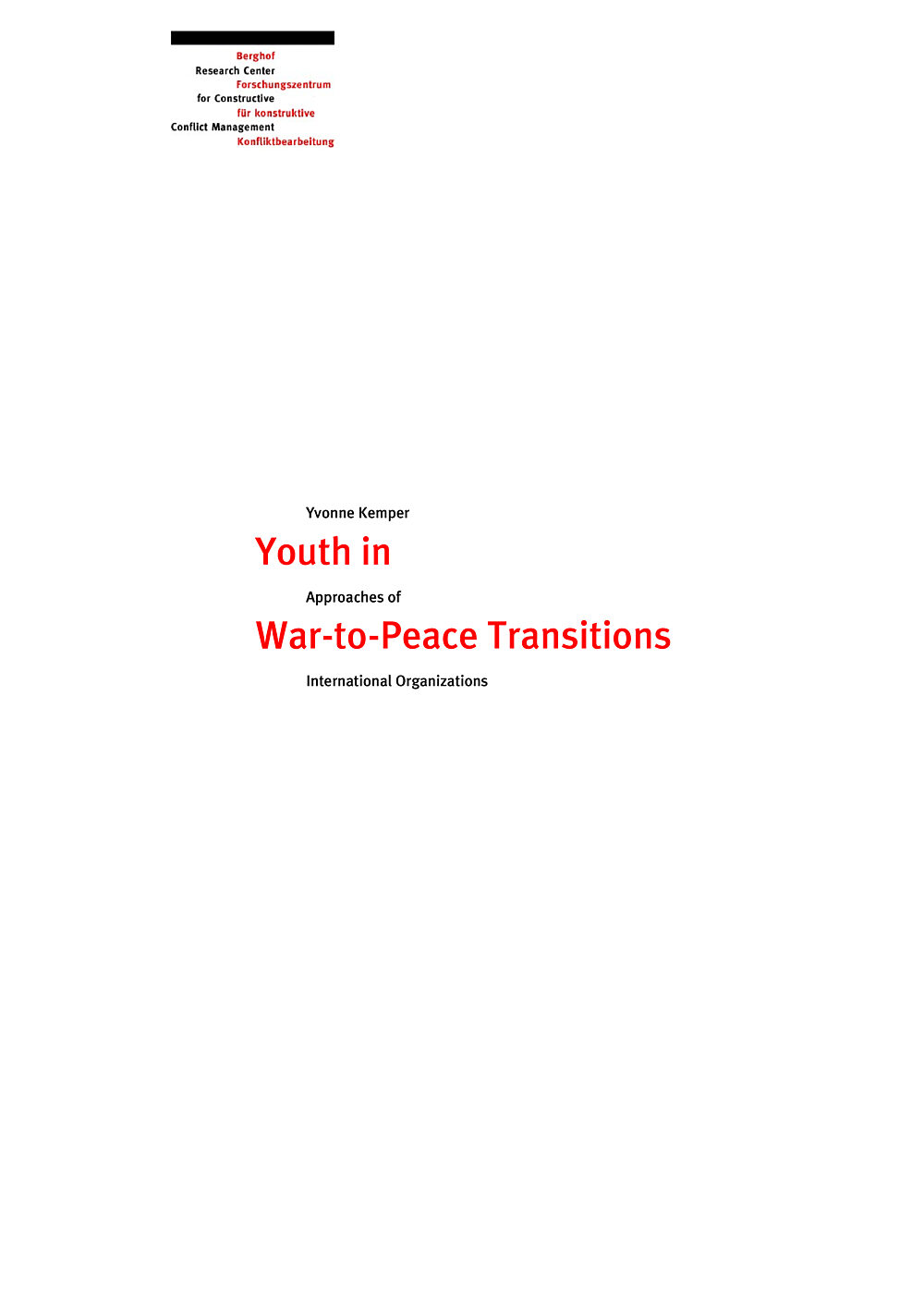
Youth in War-To-Peace TransitionsApproaches of International Organizations (Report Nr. 10 )
This study deals with youth in war-to-peace transitions and the response of international organizations to them. While youth’s relevance for societal transformation is a long-acknowledged fact, their large numbers and potential roles in conflict have recently caused organizations to consider them a target group for peace and development programs. Reflecting on this process, this study thus assesses the difficulties in conceptualizing the role of youth in peace-building processes on the one hand and the concrete efforts of international organizations to integrate them into their policies and programs on the other. For this purpose, it explores four guiding questions: First, what approaches have international organizations developed regarding youth? Second, on which assumptions about youth and their role in violent conflicts are they based? Third, how do the different approaches affect program development, and, fourth, are they are compatible?
- Year2005
- Author(s)Yvonne Kemper
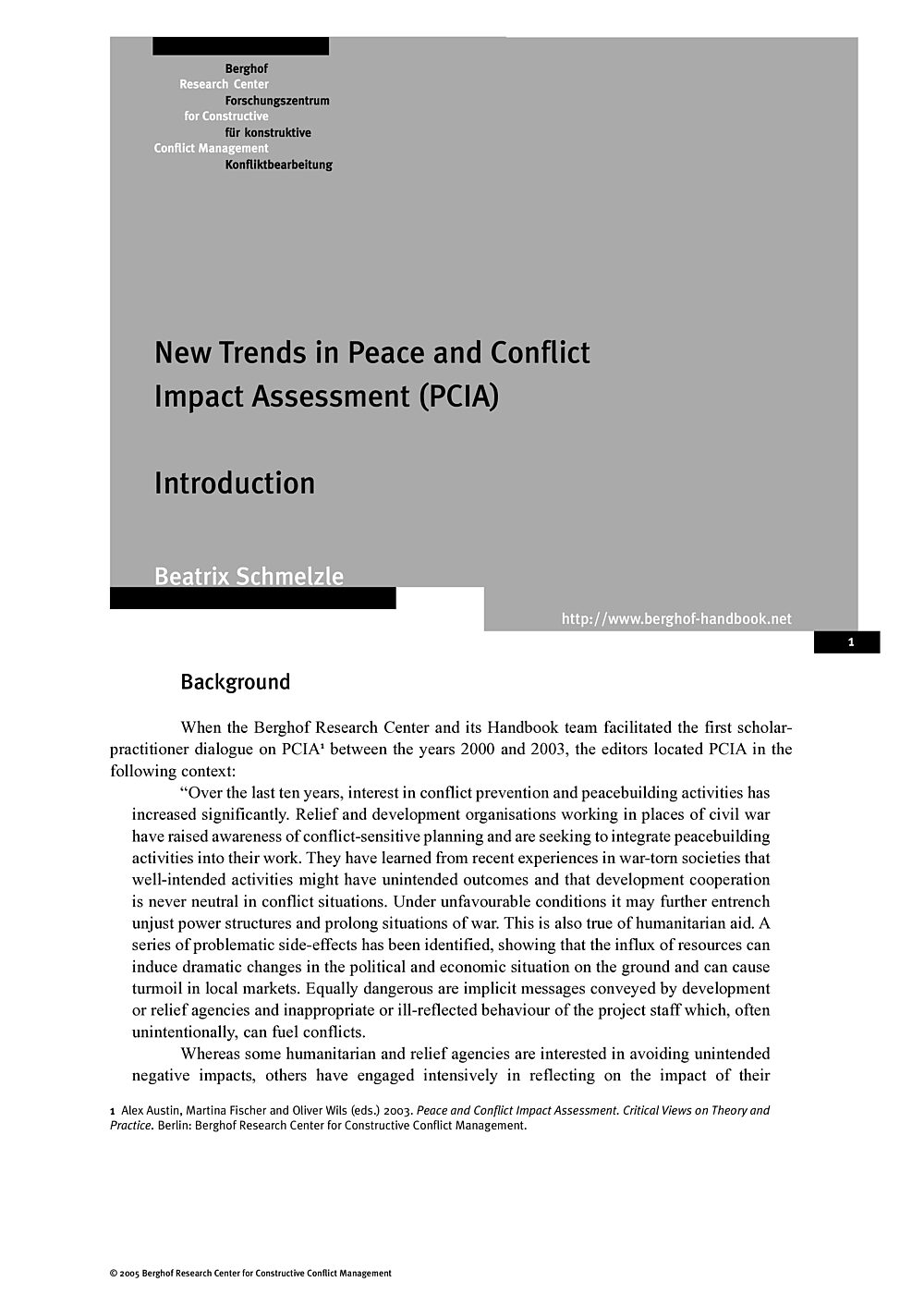
New Trends in PCIAHandbook Dialogue Series No. 4 - complete
Questions of effectiveness, impact and evaluation continue to be most relevant for the field of peacebuilding and conflict transformation: Adam Barbolet, Rachel Goldwyn, Hesta Groenewald & Andrew Sherriff report with intimate knowledge on the development of "conflict sensitivity" as an alternative to PCIA; Kenneth Bush sends thought-provoking "field notes", reflecting on his learning in the context of applying PCIA in the South; Thania Paffenholz presents a comprehensive overview of the "Aid for Peace Approach". Short reflection papers by all authors shed light on progress and controversy regarding the new trends in peace and conflict impact assessment.
- Year2005

Hawks and Doves: Peacekeeping and Conflict ResolutionHandbook Article
Discusses the dual goal of controlling violence while rebuilding cooperative relationships, which calls for an integration of academic approaches with peacekeeping practice. The authors highlight the relevance of conflict resolution theory for peacekeepers, commenting on areas of application and addressing future peacekeeping needs. (revised for 2004 print edition)
- Year2004
- Author(s)Wibke Hansen, Oliver Ramsbotham, Tom Woodhouse
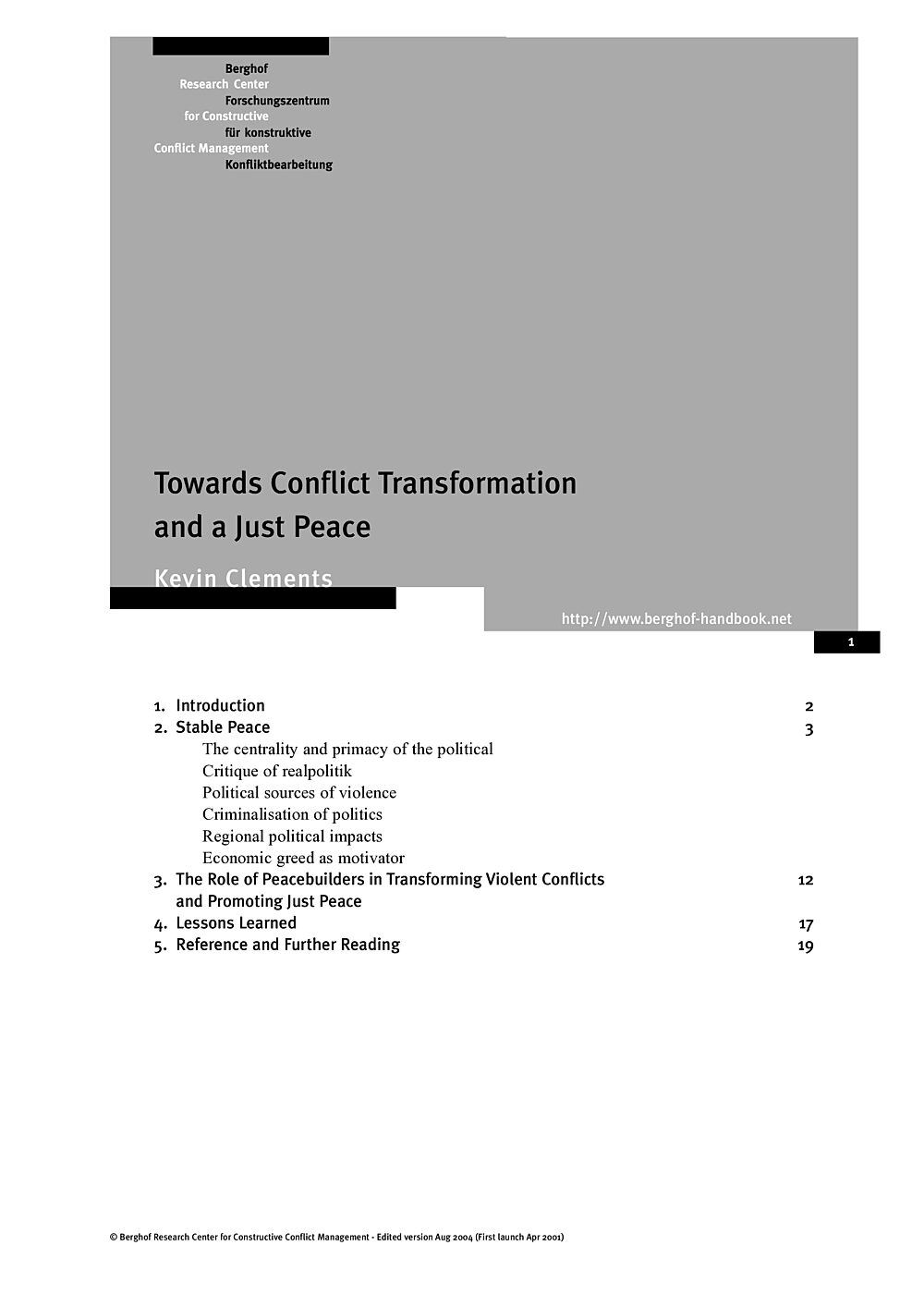
Towards Conflict Transformation and a Just PeaceHandbook Article
Deals with the challenges of linking theory, research and practice, and offers strategies for doing so in all relevant areas of social change. The author argues that the structural sources of conflict have been relatively neglected in conflict analysis and in the design of intervention processes. Until this situation is reversed, it will be difficult to generate stable, peaceful and just relationships. (revised for 2004 print edition)
- Year2004
- Author(s)Kevin Clements
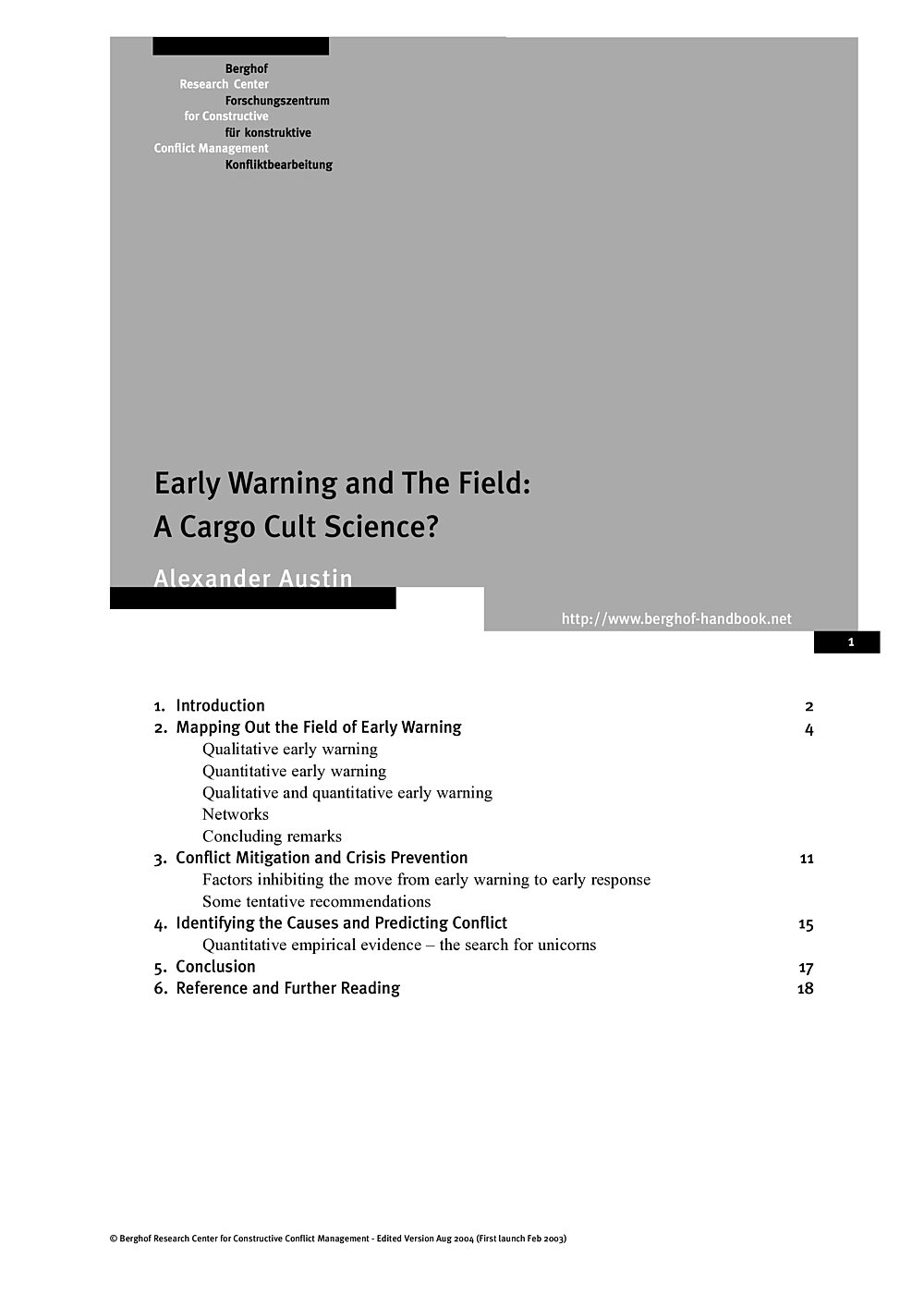
Early Warning and The Field: A Cargo Cult Science?Handbook Article
Introduces early warning activities and identifies different areas of focus, methodologies and mechanisms employed. The author discusses critically whether existing early warning systems can: a) identify the causes of conflict; b) predict the outbreak of conflict; and c) mitigate conflict. (revised for 2004 print edition)
- Year2004
- Author(s)Alex Austin